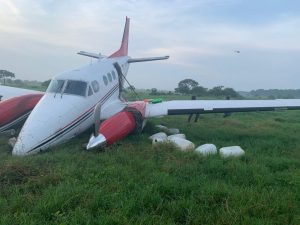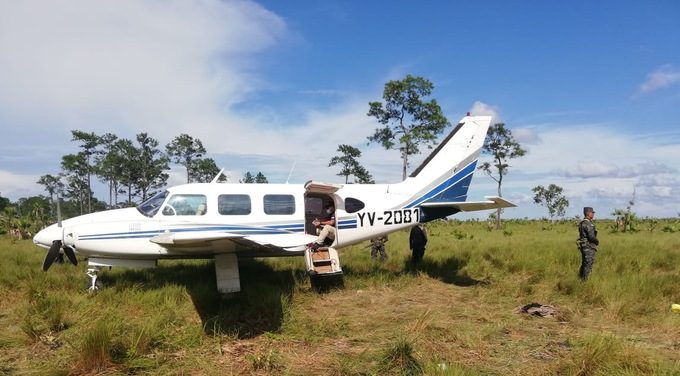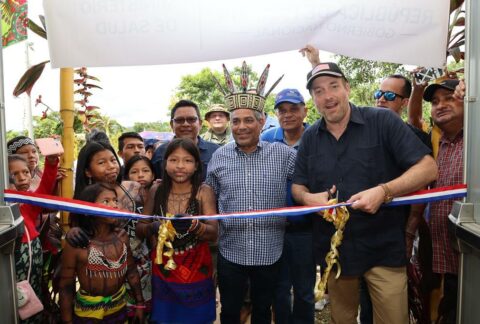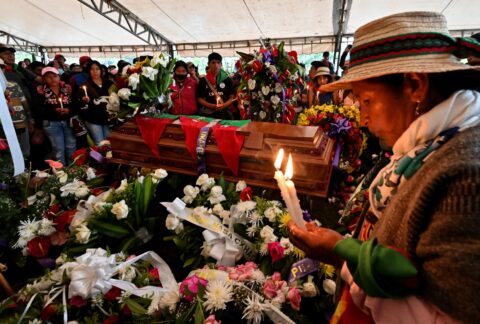On October 21, the Honduran Air Force, upon receiving intelligence from Colombia, intercepted a narco-aircraft in Brus Laguna municipality, Gracias a Dios department, coming from Venezuela, the Honduran Office of the Attorney General said in a statement. In total, authorities counted more than 200 kilograms of cocaine that the aircraft transported.
This case, the Office of the Attorney General said, is related to that of a light aircraft that crashed in the same area on October 13, and where its two crew members died. The aircraft, where authorities found 30 kg of cocaine, had also departed from Venezuela, the newspaper La Prensa reported.

Army First Lieutenant José Antonio Coello, Communications officer for the Honduran Armed Forces, told Diálogo that most narco-aircraft intercepted so far this year in Honduran territory — eight as of October 21, he said — came from Venezuela. In an interview with the newspaper El Nacional, Claudio Sandoval, the ambassador to Honduras for Venezuelan Interim President Juan Guaidó, shared a similar opinion.
“Almost all aircraft with drugs that land in Honduras come from Venezuela and belong to the Cartel of the Suns,” Sandoval told El Nacional. “Central America is important, ideal for the Cartel of the Suns.”
Sandoval explained that narcotraffickers seek to land in Honduras to transfer the drugs by land or sea to Guatemala, Mexico, and the United States. The Honduran authorities said that most of the illegal flights were detected in Gracias a Dios department, a scarcely populated, hard-to-reach jungle area bordering Nicaragua.
According to the U.S. Department of State’s 2020 International Narcotics Control Strategy Report, an estimated 4 percent (or 120 tons) of the cocaine coming from South America in 2019 transited through Honduras by air or sea. The report also highlights that Gracias a Dios is an area particularly vulnerable to narcotrafficking, due to its remoteness and limited infrastructure.
“Gracias a Dios covers 15,000 square kilometers, and it is an area preferred by these [narcotrafficking] groups because of its many waterways and maritime borders,” 1st Lt. Coello said.
According to 1st Lt. Coello, national institutions have strengthened the fight against narcotrafficking in Gracias a Dios, which has been particularly “successful in operations and seizures” by air in recent months.
On October 9, the Armed Forces said to have secured a narco-aircraft loaded with cocaine in the Brus Laguna area, in Gracias a Dios. On August 24, the Honduran Air Force announced the interception of a light aircraft with 489 kg of cocaine in La Mosquitia municipality, Gracias a Dios. On July 20, Honduran authorities seized 806 kg of cocaine in an aircraft, also in Brus Laguna, the Office of the Attorney General said in a statement.
Of the more than 3 tons of cocaine seized from January to October, according to 1st. Lt Coello, more than 1.6 tons were seized using air assets that facilitated ground and maritime interdiction operations. “To date, 30 clandestine landing areas have been disabled in Gracias a Dios; with these actions, we deny aircraft entry into the national territory,” 1st. Lt. Coello said.
The officer stressed the importance of intelligence sharing and the support of regional countries in the fight against narcotrafficking. “The institutional effort with Colombian and U.S. support and trinational operations with Guatemala, El Salvador, and Nicaragua are very important to combat the scourges that threaten the region,” he concluded.









